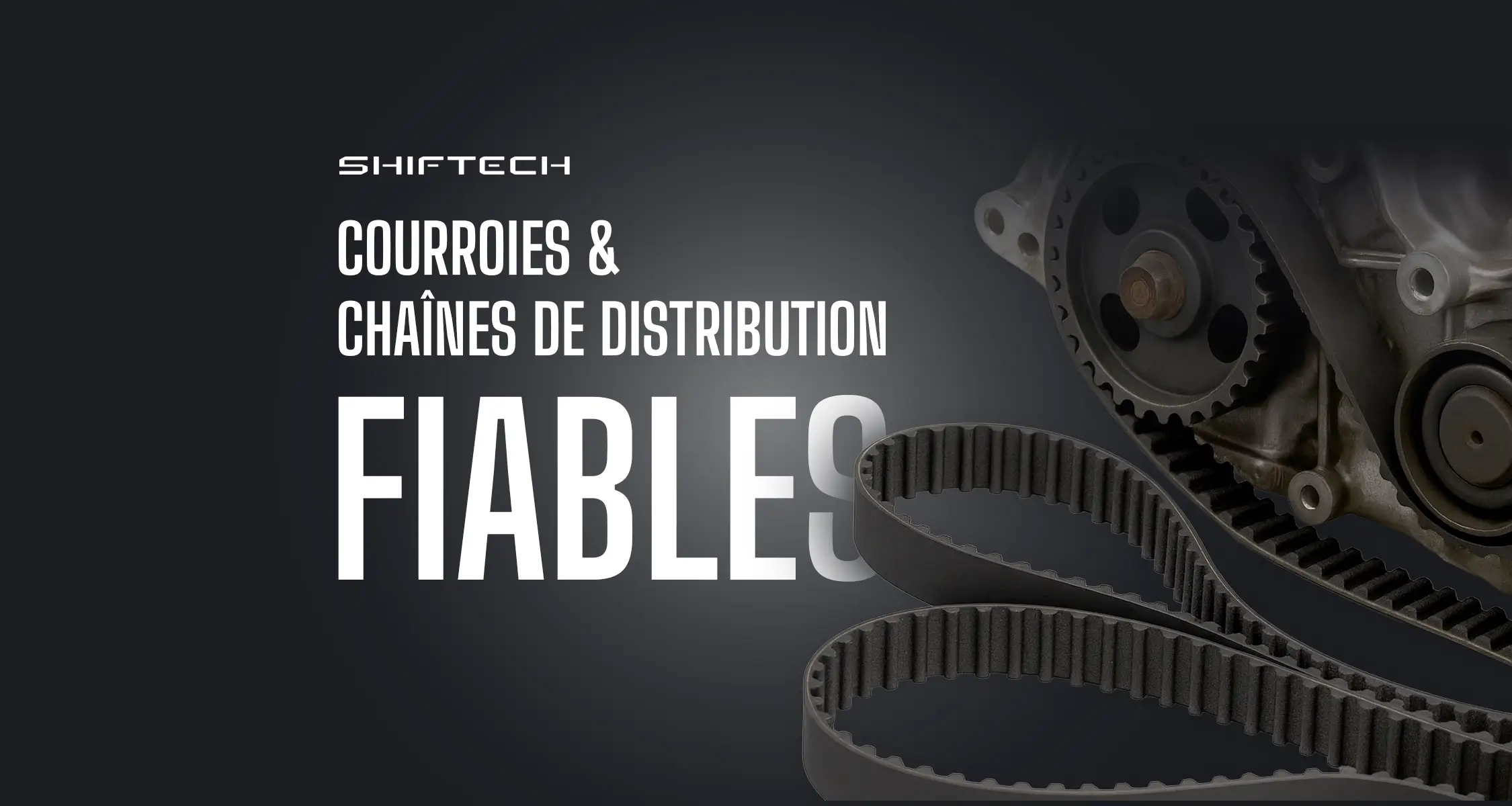
Timing belts and chains, the guide to everything you need to know!
Timing is a key component of the engine, ensuring synchronisation between the opening and closing of the valves and the movement of the pistons. System failure, such as incorrect timing or belt breakage, can lead to serious mechanical damage or even destruction of the engine. Some vehicle models have recurring problems with the belt, such as the 1.2 PureTech engines produced by Peugeot, Citroën, DS and Opel before 2018, which are subject to premature wear of the belt in oil. Other models, such as Renault models equipped with the 1.5 dCi K9K engine up to 2012, have also been affected by early belt failures. This FAQ aims to clarify all aspects of timing belts and chains.
Things to remember
- The timing belt is an important part of the engine, but it is subject to wear and requires regular replacement.
- Timing chains are more durable and require little maintenance, but they can be noisier and more expensive.
- Some engines, such as the 1.2 PureTech and 1.5 dCi K9K, are notorious for recurring belt problems requiring early replacement.
- Ignoring the signs of belt wear can lead to serious engine damage and costly repairs.
- Shiftech's Stage 1 engine reprogramming is belt-safe, as it complies with the manufacturer's standards.
Timing belt and chain operation
The timing system synchronises the movement of the valves with the rotation of the crankshaft to ensure optimum combustion and avoid any impact between pistons and valves. Two main technologies are used: the timing belt and the timing chain.
Timing belt
The timing belt is a toothed belt made of reinforced rubber that links the crankshaft to the camshaft. It is silent and economical to produce, but must be replaced regularly to avoid any breakage that could seriously damage the engine.
Timing chain
The timing chain, made up of steel links, is designed to last the life of the engine with little maintenance. However, it is noisier and heavier. Some models have shown signs of premature wear, requiring extra vigilance.
Advantages and disadvantages of the two systems
Before choosing between timing belts and timing chains, it's important to understand their strengths and weaknesses. Here are the main criteria for comparison:
|
Criterion |
Timing belt |
Timing chain |
|
Durability |
Replacement every 5-8 years or 100,000-180,000 km |
Can last the life of the engine |
|
Cost |
Less expensive |
More expensive |
|
Noise |
Quiet |
Noisier |
|
Maintenance |
Mandatory replacement |
Low maintenance |
|
Risk of breakage |
May break, causing serious damage |
Can stretch but rarely break |
When and why change a timing belt?
Timing belts are subject to natural wear and must be replaced according to the manufacturer's recommendations, generally every 5 to 8 years or between 100,000 and 180,000 km. Some engines, such as the 1.2 PureTech from Peugeot, Citroën, DS and Opel produced before 2018 or the 1.5 dCi K9K from Renault (up to 2012), sometimes require early replacement due to known faults.
Signs of wear and tear can alert the driver: unusual noises, vibrations, difficulty starting or loss of power. These symptoms should not be ignored, as a defective belt can fail without warning.
Respecting replacement intervals is essential to avoid engine failure and high repair costs.
Engine reprogramming and impact on the timing system
Shiftech's Stage 1 engine reprogrammings are designed to comply with manufacturers' standards and have no negative impact on belt life. Unlike some aggressive reprogramming, Shiftech optimises performance while preserving component reliability.
FAQ - Frequently Asked Questions
How do I know if my car has a belt or chain?
Consult the vehicle manual or ask a professional.
Which models have the worst belt problems?
Peugeot, Citroën, DS and Opel (1.2 PureTech before 2018), Renault 1.5 dCi (before 2012), Opel Insignia 2.0 D20DTH.
How much does a replacement cost?
Between €500 and €1,200, depending on the model and the garage.
Why is the 1.2 PureTech engine notorious for its problems?
because of premature wear of the belt, which is immersed in oil, sometimes requiring replacement after 60,000 km.
Choosing between a timing belt and a timing chain depends above all on your needs and your budget. If reliability and longevity are your priorities, opting for an engine fitted with a timing chain is generally a safe bet. Designed to last the life of the engine with minimal maintenance, the chain offers appreciable peace of mind, although it can be slightly noisier and more expensive to buy.
On the other hand, if you're looking for a lower initial cost and quieter operation, timing belt engines can be an excellent choice, provided you strictly adhere to the replacement intervals. Neglecting this maintenance can have serious consequences for the engine and generate substantial repair costs.
It's also important to stress that Shiftech's Stage 1 engine rebuilds are designed to optimise performance without compromising engine reliability. They comply with manufacturers' standards and have no negative impact on the life of the timing belt, unlike some more aggressive reprogramming.
By following the maintenance recommendations, keeping an eye out for signs of wear and choosing the technology best suited to your needs, you'll maximise the life of your engine while avoiding unforeseen expenses. Valve timing is a key component of the engine, and knowing it well means you can drive safely and with peace of mind.
By following this advice, you can maximise the life of your engine and avoid costly repairs!